#HireSuccess - How to Streamline the Recruitment Process for SMEs
A Step-by-Step HR Guide for Using Wantedly Hire’s ATS
For many small and medium enterprises (SMEs), hiring can feel like juggling too many things at once. Between day-to-day operations, managing finances, and trying to attract the right talent, recruitment often ends up being reactive instead of strategic. The result? Endless email threads, scattered spreadsheets, and missed candidates who could have been the perfect fit.
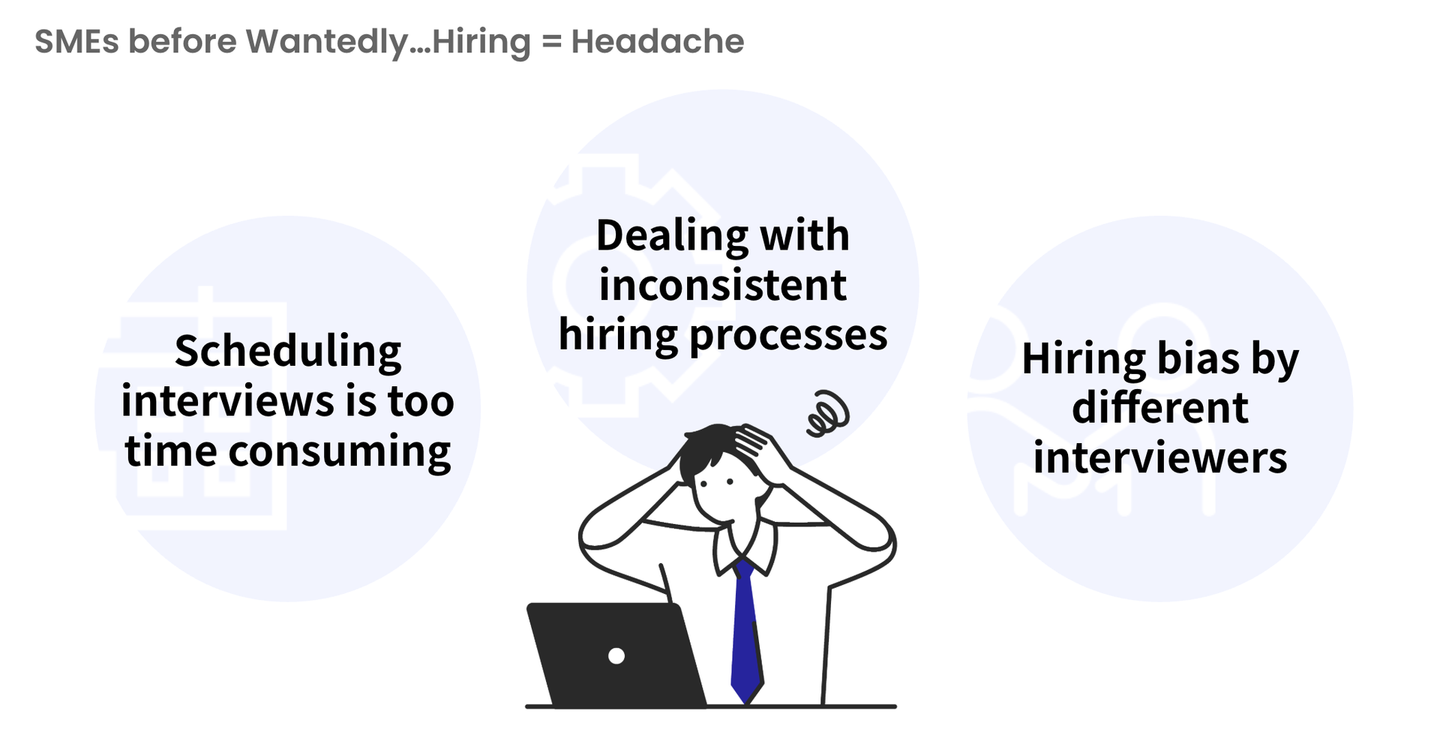
The reality is that efficient hiring is not just for large corporations with HR departments. Across Singapore and other fast-growing economies, SMEs employ the majority of the workforce, which means their ability to hire quickly and effectively directly impacts business growth. With tighter labour markets and increasing competition for skilled talent, SMEs cannot afford to rely on manual processes.
That is where Wantedly Hire’s Applicant Tracking System (ATS) comes in. It helps SMEs move from cluttered spreadsheets and inconsistent communication to a clear, structured, and measurable recruitment process. This guide walks you through how to streamline your hiring process step by step using automation, analytics, and collaboration tools built into Wantedly Hire’s ATS.

Why SMEs Need to Streamline Recruitment
Recruitment inefficiency costs SMEs far more than most realise. Every extra week a position stays open means lost productivity, overworked staff, and missed business opportunities. In Singapore, SMEs make up more than 99 per cent of all businesses and hire roughly seven in ten workers, yet many still manage recruitment manually through job boards and email inboxes. These fragmented systems make it difficult to track candidate progress or maintain a consistent hiring experience.
An unstructured process also creates friction for candidates. When applicants do not receive timely updates or clear next steps, they often lose interest and accept offers elsewhere. This is especially risky for SMEs that depend on speed to secure talent before larger firms do.
By contrast, using an ATS like Wantedly Hire helps SMEs bring structure and visibility to every stage of hiring. With automated communication, standardised workflows, and performance analytics, HR teams and business owners can finally move from reactive firefighting to proactive planning. It is about transforming recruitment from an administrative burden into a smooth, data-informed system that supports growth.
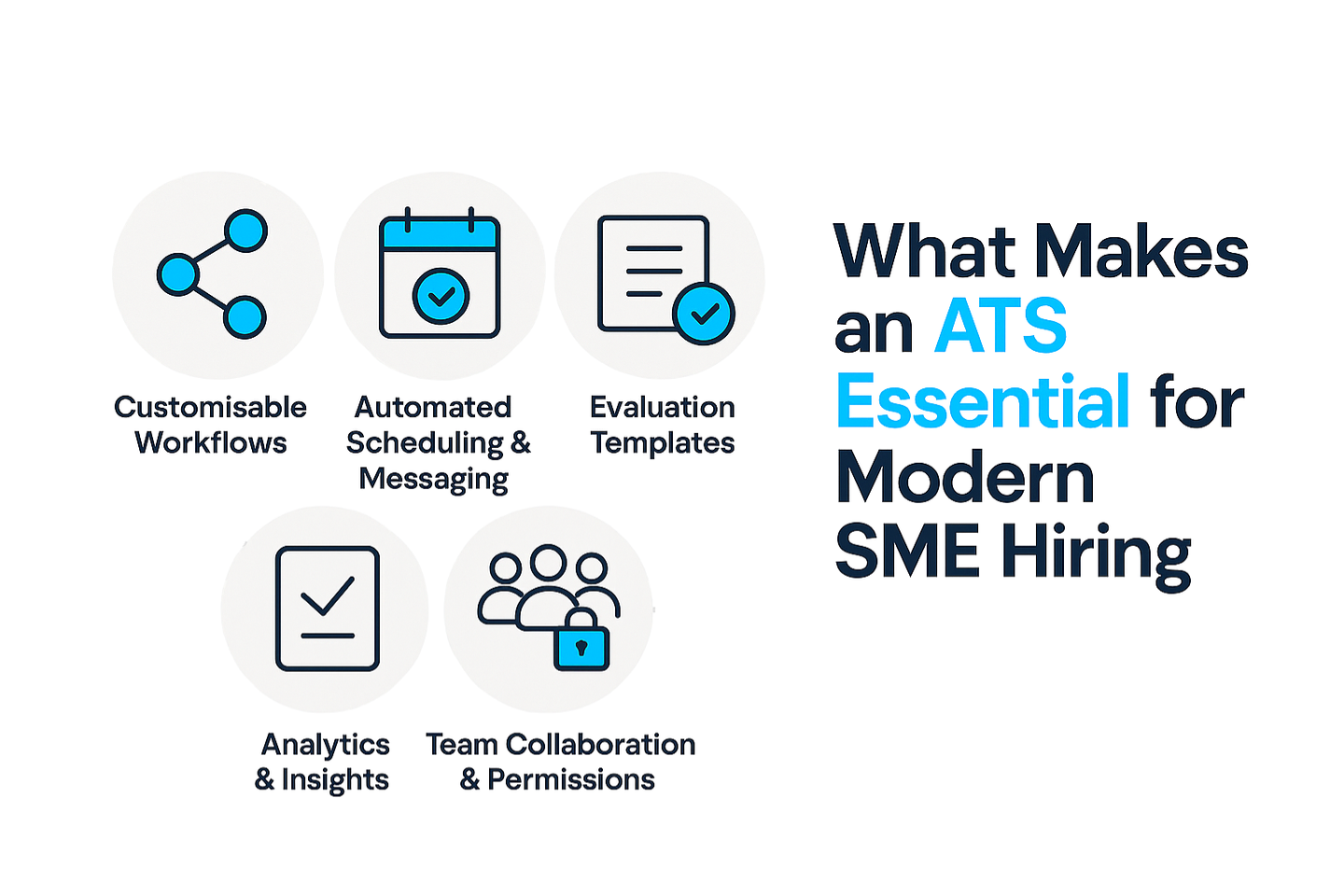
What Makes an ATS Essential for Modern SME Hiring
An Applicant Tracking System acts as a central hub for managing the entire recruitment journey. Instead of juggling applications, emails, and feedback across multiple tools, everything lives in one organised platform.
For SMEs, the benefits go beyond convenience. Here are the most important reasons to adopt an ATS like Wantedly Hire.
1. Clear, Customisable Workflows
Every SME has its own approach to hiring. Some prefer casual chats before formal interviews, while others use short technical tasks to evaluate fit. Wantedly Hire allows teams to design custom workflows that mirror how they already hire. Within each stage, users can set up specific actions such as interviews or assessments, ensuring the process is both structured and flexible.
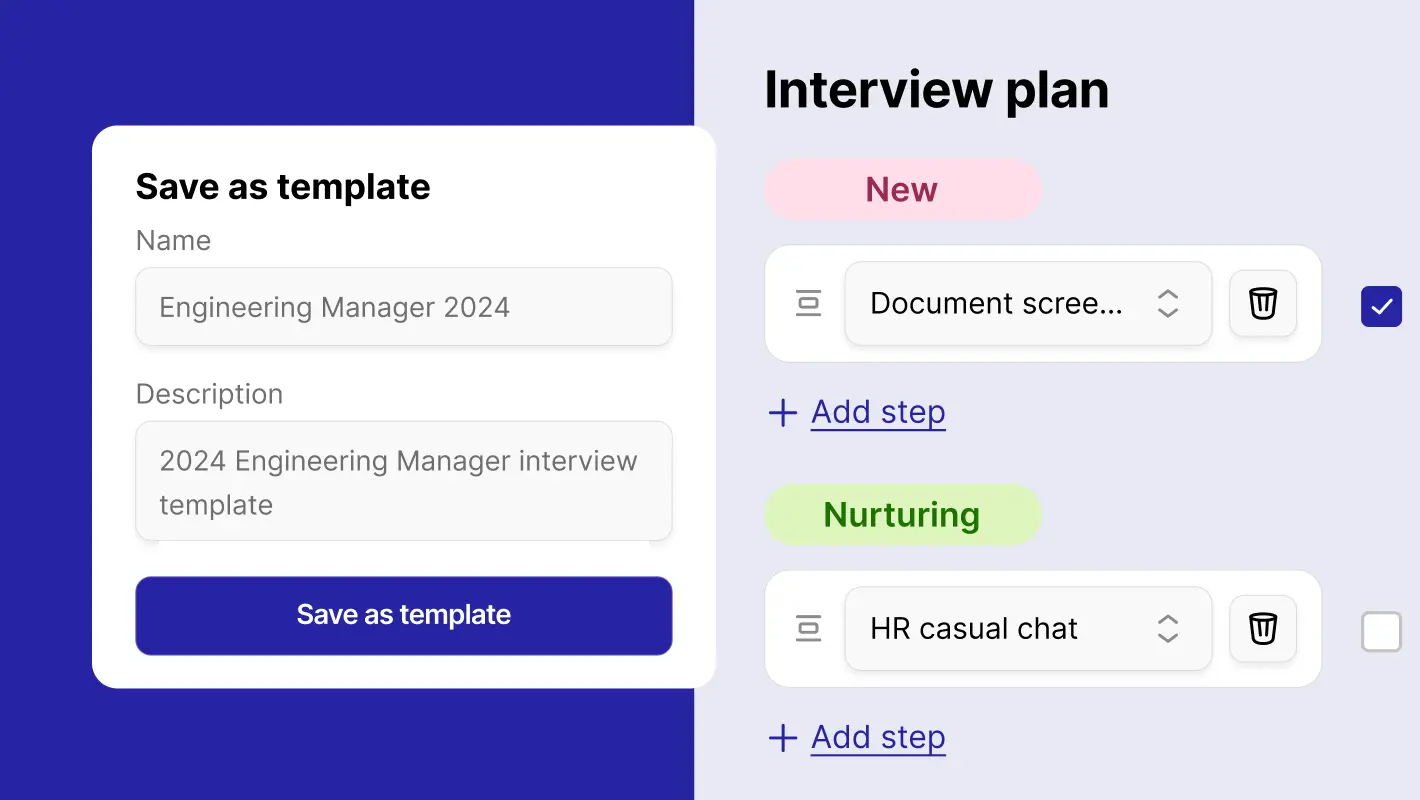
This flexibility is critical for smaller businesses where hiring is often handled by a mix of founders, managers, and part-time HR staff. By standardising the process within Wantedly Hire, everyone involved knows what stage a candidate is in and what needs to happen next.
2. Automated Interview Scheduling and Messaging
Coordinating interview times can take more time than the interview itself. Wantedly Hire’s automated scheduling feature removes this headache by syncing interviewer calendars and allowing candidates to choose available slots. Automated emails can also be triggered at each interview stage, ensuring timely communication without requiring manual follow-ups.
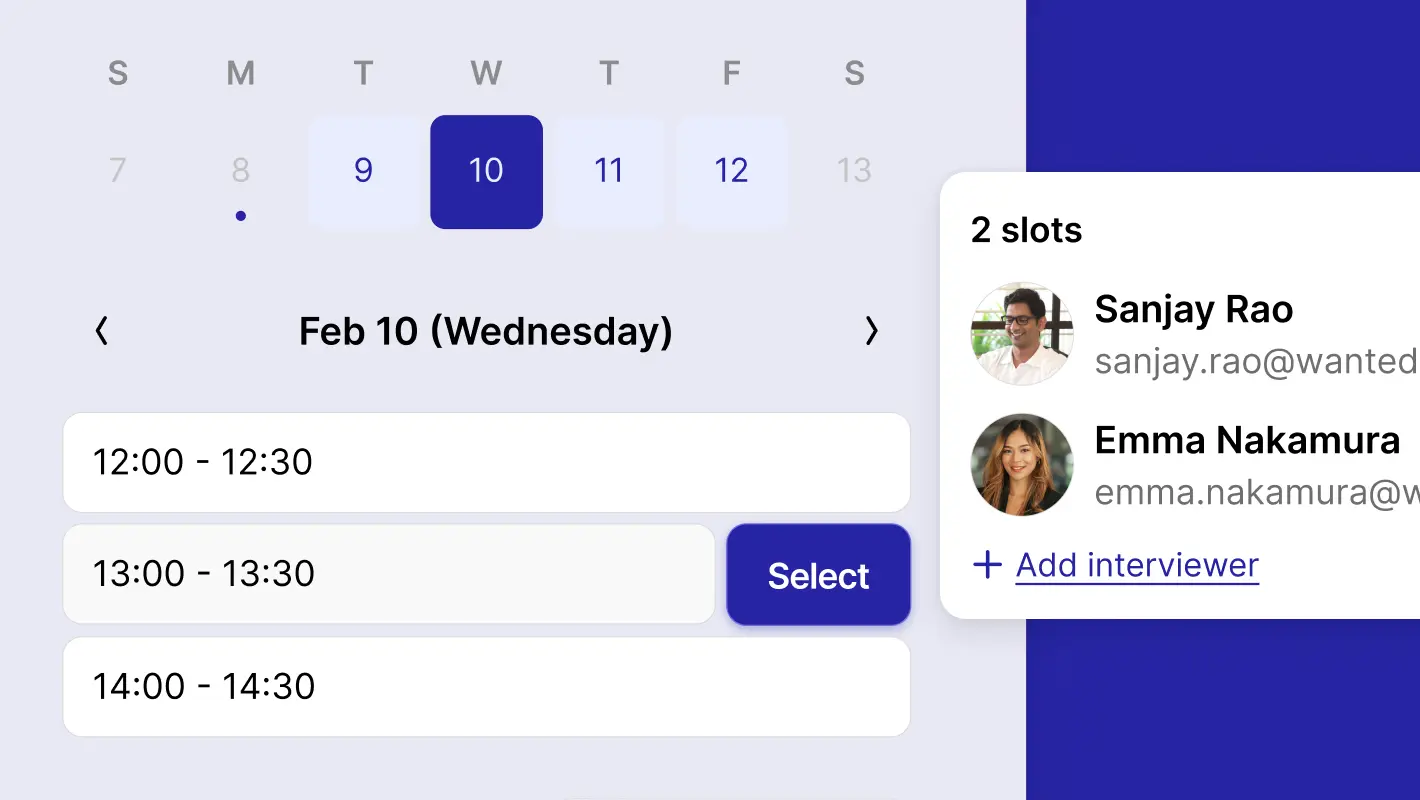
This reduces no-shows, keeps candidates engaged, and frees up the recruiter's time to focus on evaluating talent rather than logistics.
3. Built-in Templates for Evaluation and Feedback
Consistency is key when comparing candidates fairly. Wantedly Hire includes interview and evaluation templates that let hiring teams align on what skills and traits matter most for a role. Templates can be reused across positions, helping SMEs maintain a clear hiring standard and avoid bias or inconsistent assessments.

4. Data-Driven Insights and Alerts
Recruitment should be measurable. Wantedly Hire provides analytics dashboards that help SMEs track how many candidates apply, where they drop off, and how close they are to reaching hiring goals. The system can also generate alerts when hiring targets are unlikely to be met, giving teams a chance to adjust their approach early.

Over time, this data helps SMEs refine their job descriptions, improve candidate communication, and identify which hiring channels perform best.
5. Team Collaboration and Permission Controls
In SMEs, hiring is often a team effort. A manager might need to review shortlisted candidates, while an HR executive coordinates interviews. Wantedly Hire’s permission controls make collaboration simple and secure by allowing businesses to define what each user can access. This ensures confidentiality while keeping everyone informed and accountable.
Together, these capabilities make Wantedly Hire a powerful tool for SMEs looking to build a recruitment process that scales with their growth.
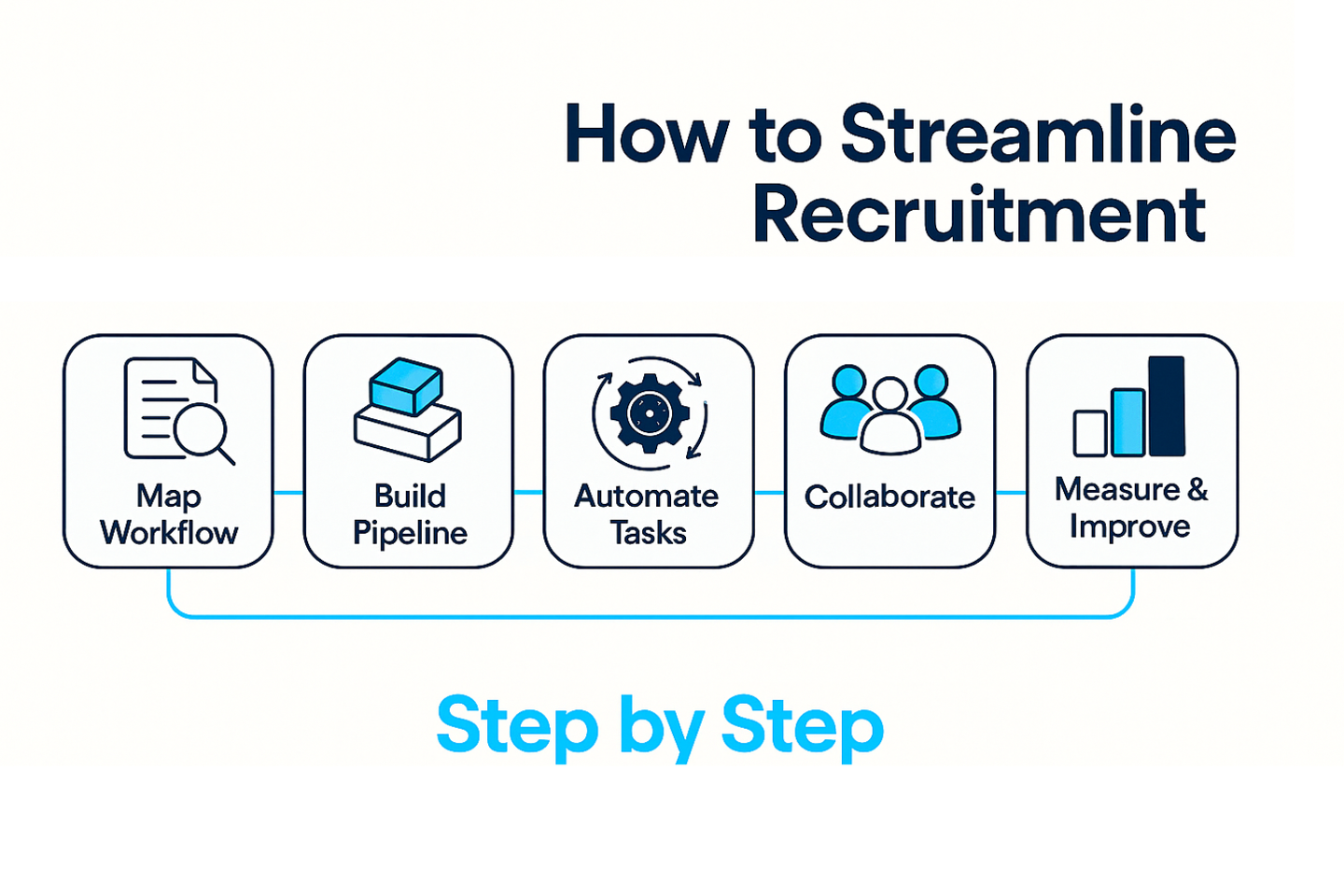
How to Streamline Recruitment Step by Step Using Wantedly Hire
A structured recruitment process is not about adding more steps. It is about creating clarity. Below is a five-step framework SMEs can use to build a smooth, measurable hiring pipeline with Wantedly Hire’s ATS.
Step 1: Map Out Your Current Workflow
Before adopting any system, identify how your hiring currently works. List each stage from job posting to onboarding. Where are delays happening? Are interview schedules constantly rescheduled? Are candidates waiting too long for feedback?
Mapping out this workflow helps you pinpoint the areas that cause inefficiency. Many SMEs find that most delays come from manual tracking or unclear responsibilities. Once you identify these friction points, you can design a new workflow inside Wantedly Hire that eliminates unnecessary repetition.
For example, you might move from a three-stage “Application → Interview → Offer” process to a clearer five-stage pipeline: Application, Shortlisting, Interview, Evaluation, Offer. Each stage can then have defined actions and automated messages.
Step 2: Build a Structured Hiring Pipeline in Wantedly Hire
With your workflow mapped, recreate it inside Wantedly Hire. The platform lets you customise each pipeline stage and assign specific actions or responsibilities. This might include scheduling first interviews, assigning technical assessments, or conducting final reviews.

Having a structured pipeline gives you full visibility into where every candidate stands. Instead of losing track of email threads, you can open the dashboard and instantly see how many candidates are in each stage and who is responsible for the next step.
This structure is especially valuable for SMEs that handle multiple roles at once. It reduces confusion, improves accountability, and ensures every applicant receives a consistent experience.
Step 3: Automate Key Tasks to Save Time
Manual coordination can consume hours each week. Wantedly Hire’s automation features make it easier to handle repetitive but necessary tasks.
You can set automatic interview scheduling, where the system finds suitable time slots based on the interviewer's availability. Automated email templates can also send candidates status updates, such as “Your interview is confirmed” or “We have moved your application to the next stage.”
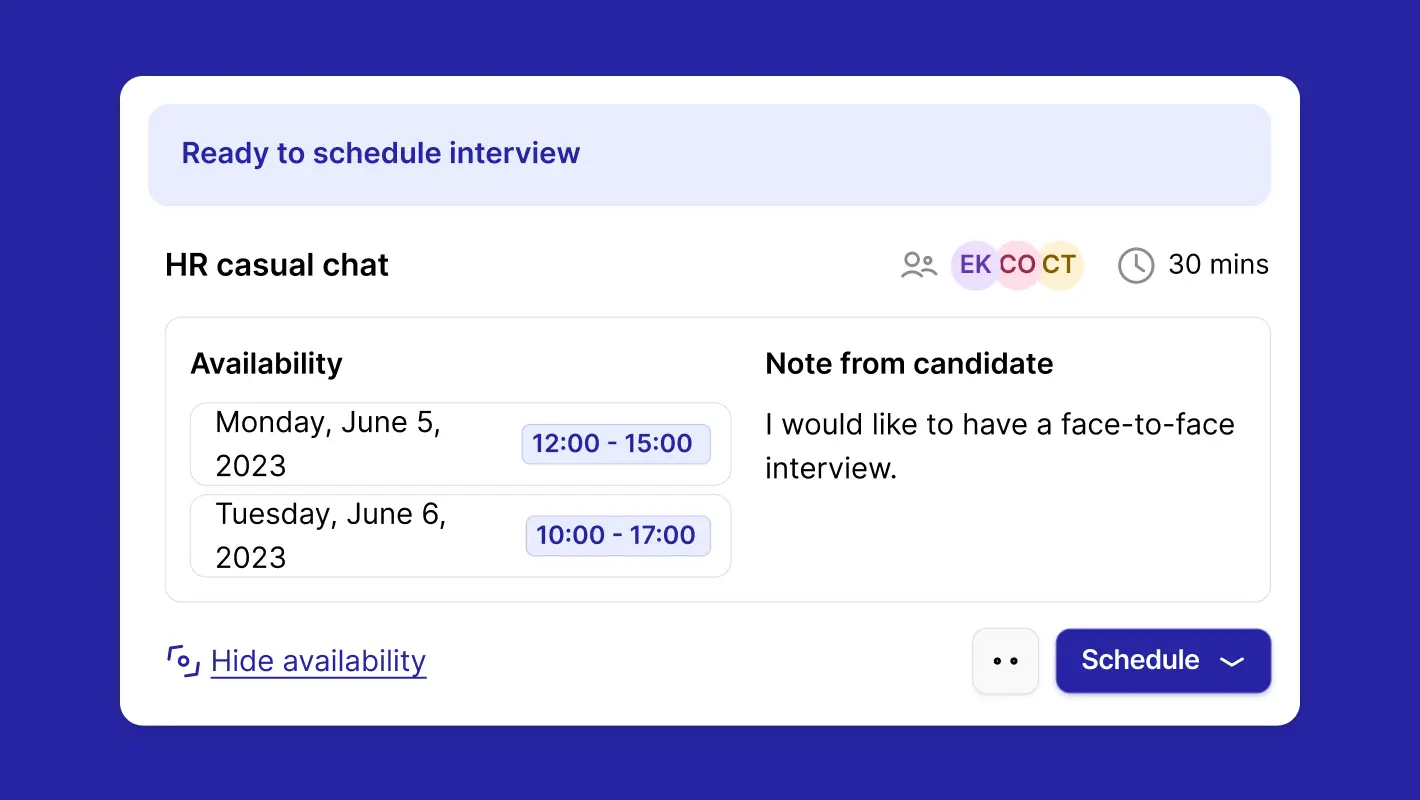
These small automations accumulate into significant time savings. Teams that previously spent entire afternoons on scheduling or follow-ups can now review more applicants or focus on improving job postings.
Automation also helps maintain a positive candidate experience. Timely communication signals professionalism and keeps applicants engaged, which can make a difference when competing with larger employers.
Step 4: Collaborate Efficiently Across the Hiring Team
A common challenge for SMEs is communication breakdown between decision-makers. Managers may forget to share interview notes, or HR might lose track of feedback. Wantedly Hire centralises all candidate information and enables in-platform collaboration, so every team member can comment, evaluate, and tag colleagues directly.

Permission controls allow you to decide who can view or edit certain details. For instance, a hiring manager might only see shortlisted candidates, while the HR lead has full visibility. This not only protects candidate data but also creates a clear workflow where responsibilities are distributed transparently.
Effective collaboration reduces back-and-forth communication and helps teams reach decisions faster, which shortens the time-to-hire without sacrificing quality.
Step 5: Use Analytics to Measure and Improve
Once your new process is running, measure its performance. Wantedly Hire’s analytics dashboard provides visibility into key recruitment metrics such as the number of applicants, conversion rates between stages, and rejection or withdrawal trends.
Tracking this data helps SMEs understand whether bottlenecks still exist. For instance, if most candidates drop off after the first interview, it might indicate unclear job expectations or scheduling delays. By spotting these trends early, teams can take corrective action before positions remain vacant for too long.
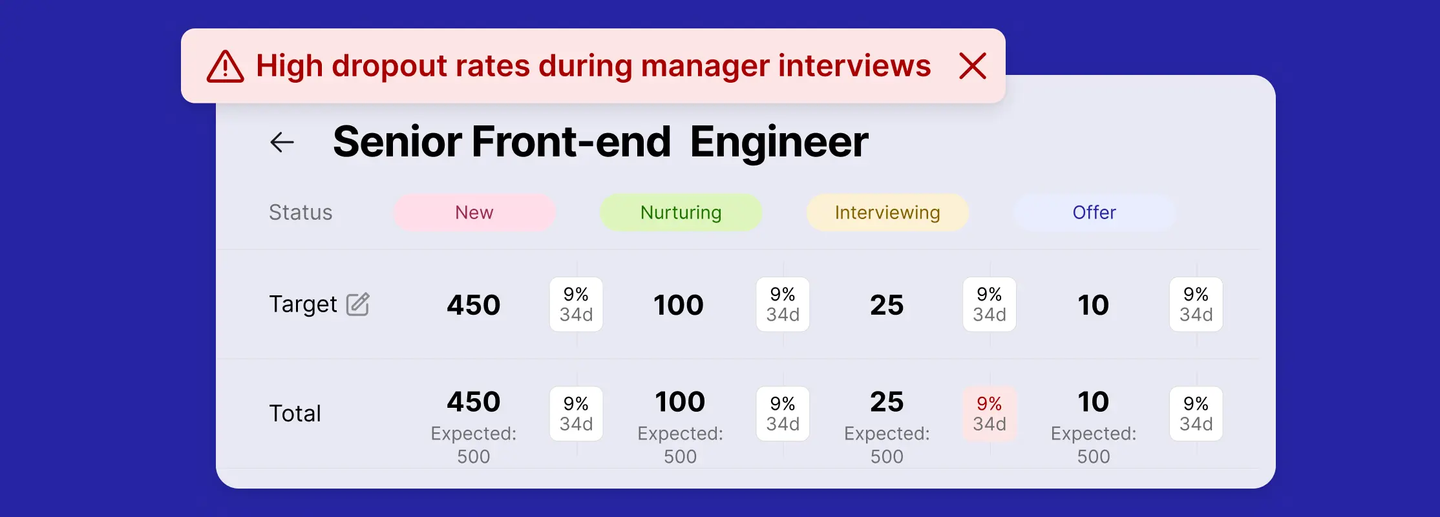
Over time, analytics also help you identify which hiring channels perform best. You may find that employee referrals yield stronger candidates than paid job listings. These insights allow SMEs to allocate resources wisely and focus on what works.
Why Streamlining Recruitment Matters Beyond HR
Hiring efficiency is not just an HR goal. It directly affects business outcomes. Every week saved in filling a role translates into higher productivity and faster project delivery. A well-organised process also improves employer branding. Candidates who experience clear communication and structured interviews often share positive impressions publicly, which attracts more qualified applicants in the future.
In Singapore’s competitive SME environment, this reputation advantage can make a real difference. Skilled candidates tend to apply first to companies that demonstrate professionalism throughout the hiring journey. A well-implemented ATS helps SMEs stand out by providing that consistency.
Globally, the same principle applies. Whether your business operates in Singapore, Malaysia, or beyond, an efficient recruitment process helps you stay responsive in fast-moving markets. Wantedly Hire’s ATS gives SMEs a practical, scalable framework for building that advantage.
Common Mistakes SMEs Make When Trying to Streamline Recruitment
Even with the best tools, process improvements can fail if implemented without structure or awareness of common pitfalls. Here are some issues SMEs should watch for when modernising their hiring.
1. Over-Automating Without Human Oversight
Automation is powerful, but hiring remains a human process. Over-reliance on automation can make candidate communication feel impersonal or cause missed nuances in evaluations. SMEs should use automation to handle repetitive tasks while maintaining personal engagement during critical stages like interviews or feedback.
2. Failing to Review Analytics Regularly
Collecting data is only useful if you act on it. Many SMEs overlook the insights available in their ATS dashboards. Scheduling regular reviews, perhaps monthly or after each hiring round, to ensure that the data drives improvement. This helps maintain consistency and prevents recurring mistakes.
3. Neglecting Candidate Communication
In competitive labour markets, silence can quickly cost you a great hire. Candidates appreciate transparency and timely updates. Automated emails and scheduling reminders within Wantedly Hire ensure no one is left waiting for weeks without feedback.
4. Using Too Many Disconnected Tools
Some businesses use one platform for job postings, another for interviews, and another for tracking candidates. This fragmentation increases errors and complicates collaboration. Centralising everything within a single system like Wantedly Hire’s ATS keeps data clean and accessible while saving time on administrative work.
5. Skipping Internal Alignment
Before launching a new system, make sure your team understands its purpose. Define roles clearly: who screens applications, who conducts interviews, and who makes the final decision. Internal alignment ensures everyone uses the ATS consistently, which improves both data quality and efficiency.
Recap: Wantedly Hire, A Smarter Way to Hire
Streamlining recruitment is about giving structure to something that is often chaotic. With Wantedly Hire’s ATS, SMEs gain a practical system to manage hiring from start to finish—one that saves time, improves collaboration, and supports data-informed decisions.
By designing a clear workflow, automating routine tasks, and leveraging analytics, businesses can reduce administrative workload while improving the candidate experience. Each improvement reinforces the next, creating a recruitment process that feels less reactive and more strategic.
If your SME is still managing hiring through spreadsheets and email threads, this is the right time to explore how automation can simplify your work. Modern recruitment no longer depends on large HR budgets or technical expertise. It depends on clarity, structure, and the right tools.
Ready to Simplify Your Hiring?
If you are ready to see how these features work in action, you can contact Wantedly Hire for a free demo session. The team will guide you through how its ATS supports your recruitment goals, whether you are hiring one role or managing multiple openings at once.
Discover how to reduce repetitive tasks, make better data-driven decisions, and deliver a smoother hiring experience for every candidate.
Conclusion
Efficient hiring is not a luxury. It is a competitive advantage. For SMEs, every hour saved on administrative work means more time spent growing the business. Wantedly Hire’s ATS offers the structure and automation needed to make that possible. With custom workflows, automated scheduling, built-in analytics, and collaborative tools, SMEs can finally build a recruitment system that scales with them.
Start small. Streamline one stage at a time. Measure the results, learn, and adjust. Over time, your recruitment process will not only become faster but also smarter, helping your business attract and retain the talent that drives success.
Streamline your hiring today. Contact Wantedly Hire to book a free demo and see how the ATS can transform the way your SME recruits.
Wantedly Hire is an application tracking system optimised for modern hiring practices. Experience seamless hiring with tailored workflows designed to align with your recruitment structure, automated interview scheduling, and actionable insights to optimise hiring performance!
Sign up for a demo and enjoy a limited-time discount on your subscription.








